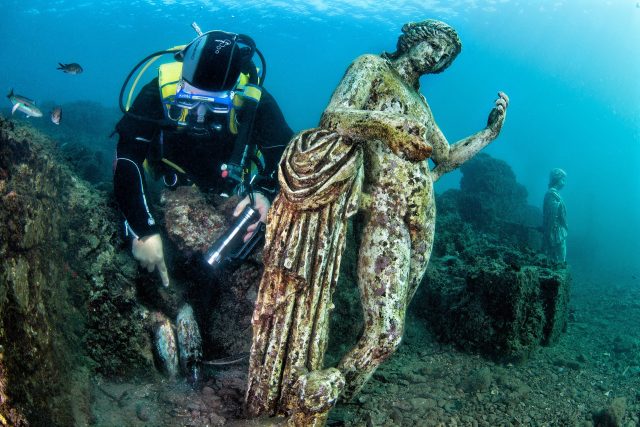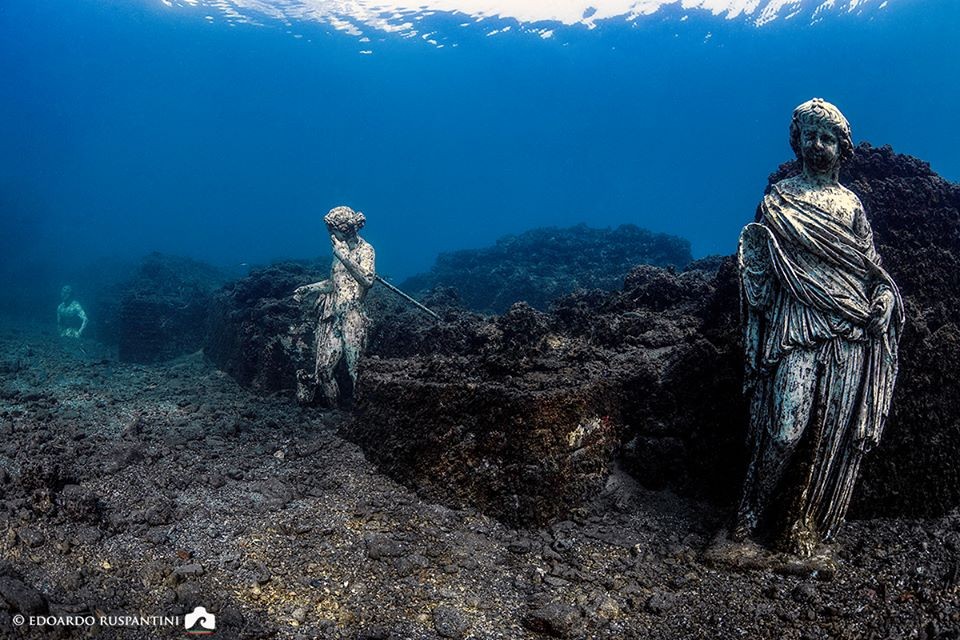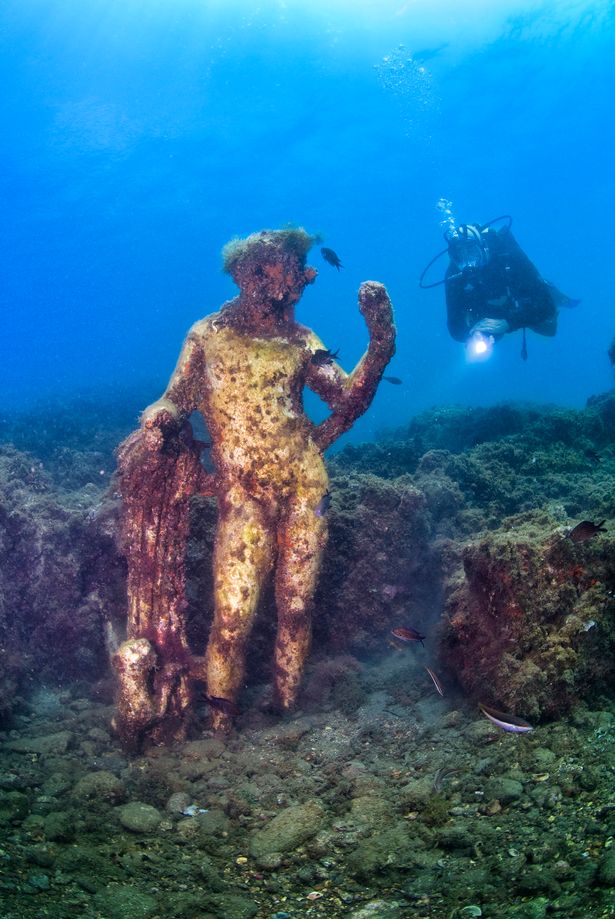Archaeologists Discover a Roman “Party” Mansion Underwater
At the underwater archaeological site of Baiae, which is close to Naples, fish swim over mosaic floors and into the wrecked villas where Roman partygoers drank, made plans, and flirted.
Off the coast of Italy, where divers can explore a number of palaces and domed bathhouses built for emperors, are statues that formerly housed lavish homes at this coastal resort.
Around the second century BC, the hot springs of Baiae, which is located on the seashore alongside the Campi Flegrei, also known in English as the Phlegraea Fields, first drew the attention of Rome’s aristocracy.
There were villas here for seven emperors, including Augustus and Nero, Julius Caesar, and Mark the Throne. The tow was referred to as a “foe to virtue’s creators” by the poet Sextus Propertius.
According to the Roman philosopher Varro, “old me behave like young boys, and many young guys act like young girls” there.
But, by the fourth century, bradyseism, or the gradual rise and fall of the land due to hydrothermal and seismic activity, had begun to affect the porticos, marble columns, shrieks, and organic fish ponds.
The entire region was submerged, including the nearby military stronghold of Miseo and Pozzoli’s economic center. Its reefs are currently between five and six meters (15 and 20 feet) underwater.
Something unusual
“It’s challenging, especially for those coming for the first time, to imagine that you can find things you’d never be able to see anywhere else in the world in just a few meters of water,” said Marcello Bertolaso, head of the Campi Flegrei diving center, which leads tourists around the site.
Divers enjoy viewing very unique things, but what you can see in Baiae Park is unique.
Since 2002, the 177 hectare (437 acre) Underwater site has been a protected marine area, ending decades in which animals were used as food by fishermen and robbers had free reign.
A licensed guide must accompany divers.
Said to have spent his days here conspiring against Emperor Nero, Gaius Calpurnia Pisoi’s villa has a striking mosaic floor that is covered by a tender sweep of sad tears on a low wall.
A clear day’s light pierces the seas to illuminate the shore as the explorers follow the actual stops of the coastal route via a number of spas and stores. The originals are currently a museum; these are reproductions.
When we conduct study in new regions, we immediately remove the soil where we believe a floor once existed, document it, and then cover it again, according to archaeologist Erico Gallocchio for AFPTV.
“If we don’t, the coral will be attacked by marine flora or fauna. Gallocchio, who is in charge of the Baiae park, claimed that the Sad protects them.
The large rivers were quickly located by moving a small amount of sand, although there are other places where the sand banks may be several meters deep. Undoubtedly, there are still authentic artifacts to be found, he said.
Hits: 20









